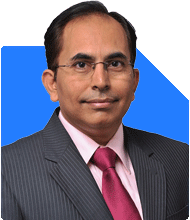Ramalingam Kalirajan |10893 Answers |Ask -Follow
Mutual Funds, Financial Planning Expert - Answered on Apr 23, 2024
He has an MBA in finance from the University of Madras and is a certified financial planner.
He is the director and chief financial planner at Holistic Investment, a Chennai-based firm that offers financial planning and wealth management advice.... more

Sir . I m Retired person ,I wanted to Invest 60 L in monthly income plan Rs 70000/ Apporx Pl suggest for Returns
Considering today's interest rate environment, traditional fixed-income instruments like bank FDs or post office schemes might not offer the desired returns after adjusting for inflation.
A Monthly Income Plan (MIP) from mutual funds could be a viable option. These funds typically invest in a mix of debt and equity, aiming to generate regular income while also offering potential capital appreciation. It's like a well-mixed cocktail where the ingredients (assets) complement each other to provide both flavor (income) and strength (growth potential).
While MIPs can provide regular dividends or systematic withdrawal plans (SWPs), it's crucial to be aware of the associated risks, especially with the equity component. Periodic reviews and adjustments may be needed to ensure the income stream remains consistent.
In summary, an MIP could be a suitable choice to meet your income needs while aiming for growth. However, it's advisable to consult with a financial advisor to tailor a strategy that aligns with your risk tolerance and financial goals.
You may like to see similar questions and answers below
Nikunj Saraf | Answer |Ask -Follow
Mutual Funds Expert - Answered on Jun 29, 2023
Ramalingam Kalirajan |10893 Answers |Ask -Follow
Mutual Funds, Financial Planning Expert - Answered on May 18, 2024
Ulhas Joshi |280 Answers |Ask -Follow
Mutual Fund Expert - Answered on Jun 07, 2024
Janak Patel |71 Answers |Ask -Follow
MF, PF Expert - Answered on Mar 26, 2025
Ramalingam Kalirajan |10893 Answers |Ask -Follow
Mutual Funds, Financial Planning Expert - Answered on Jul 11, 2025
Nitin Narkhede |113 Answers |Ask -Follow
MF, PF Expert - Answered on Dec 15, 2025
Nitin Narkhede |113 Answers |Ask -Follow
MF, PF Expert - Answered on Dec 15, 2025
Ramalingam Kalirajan |10893 Answers |Ask -Follow
Mutual Funds, Financial Planning Expert - Answered on Dec 15, 2025
Ramalingam Kalirajan |10893 Answers |Ask -Follow
Mutual Funds, Financial Planning Expert - Answered on Dec 15, 2025
Radheshyam Zanwar |6746 Answers |Ask -Follow
MHT-CET, IIT-JEE, NEET-UG Expert - Answered on Dec 15, 2025
Ramalingam Kalirajan |10893 Answers |Ask -Follow
Mutual Funds, Financial Planning Expert - Answered on Dec 15, 2025
Ramalingam Kalirajan |10893 Answers |Ask -Follow
Mutual Funds, Financial Planning Expert - Answered on Dec 15, 2025
Ramalingam Kalirajan |10893 Answers |Ask -Follow
Mutual Funds, Financial Planning Expert - Answered on Dec 15, 2025
Samraat Jadhav |2508 Answers |Ask -Follow
Stock Market Expert - Answered on Dec 15, 2025
Ramalingam Kalirajan |10893 Answers |Ask -Follow
Mutual Funds, Financial Planning Expert - Answered on Dec 15, 2025



























